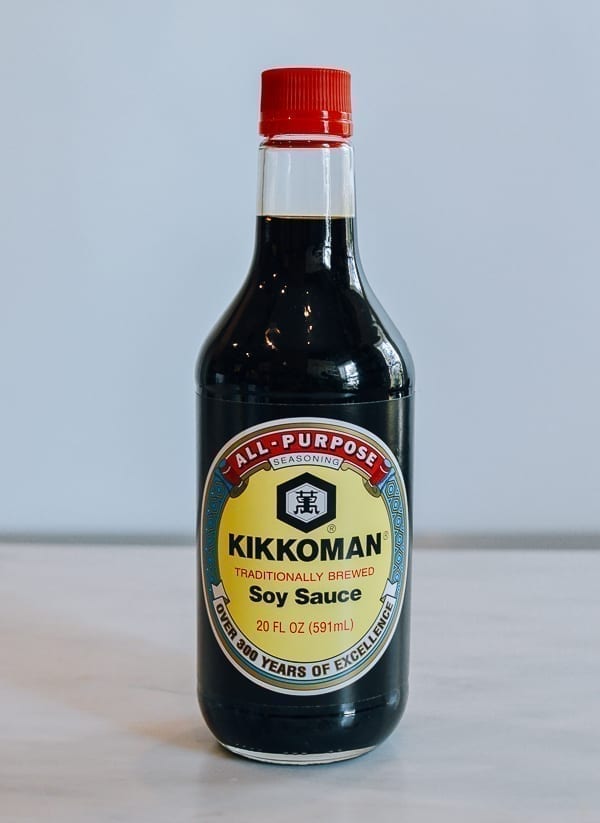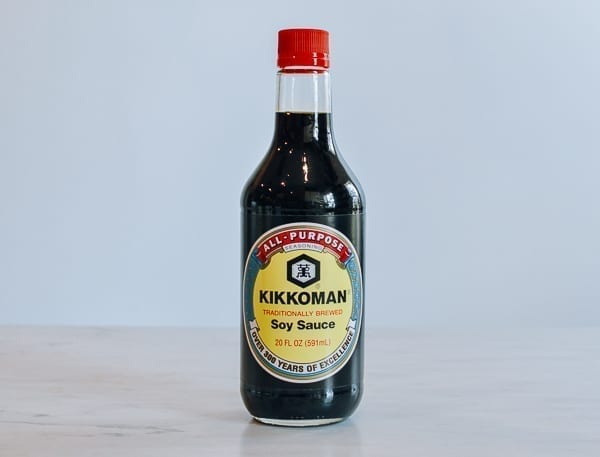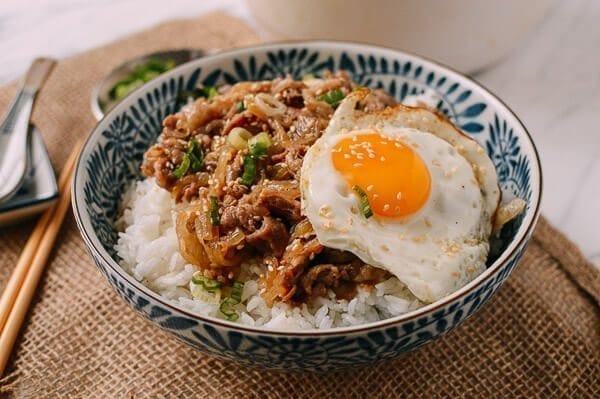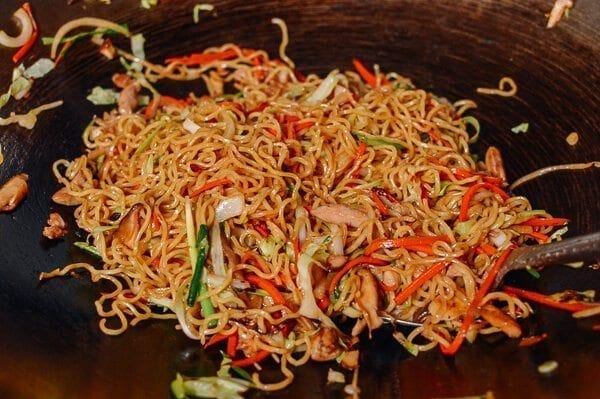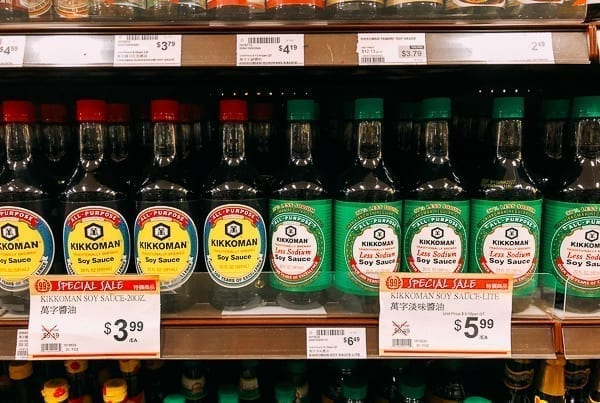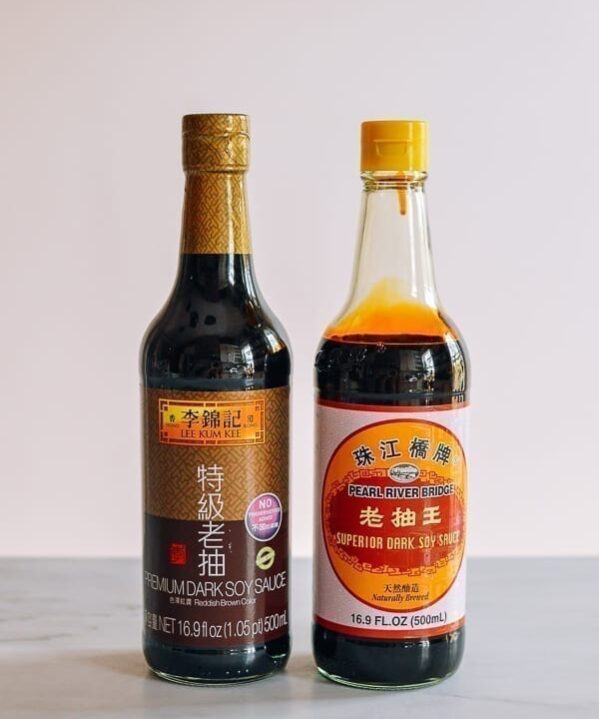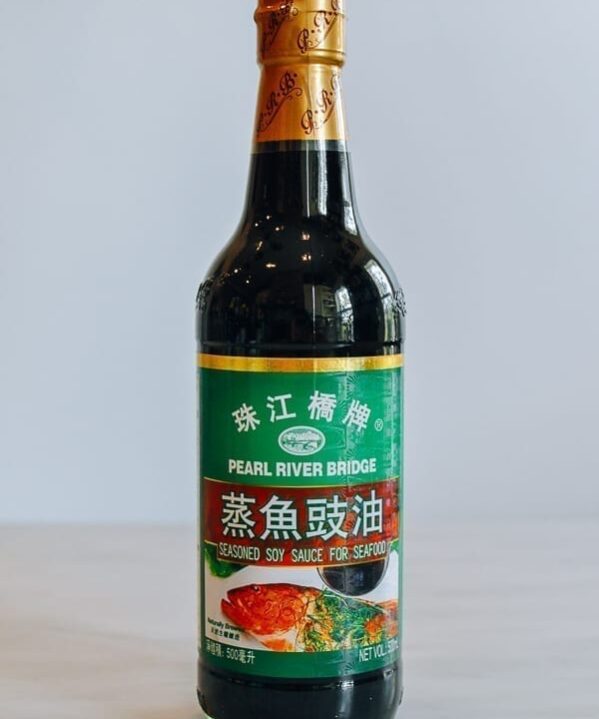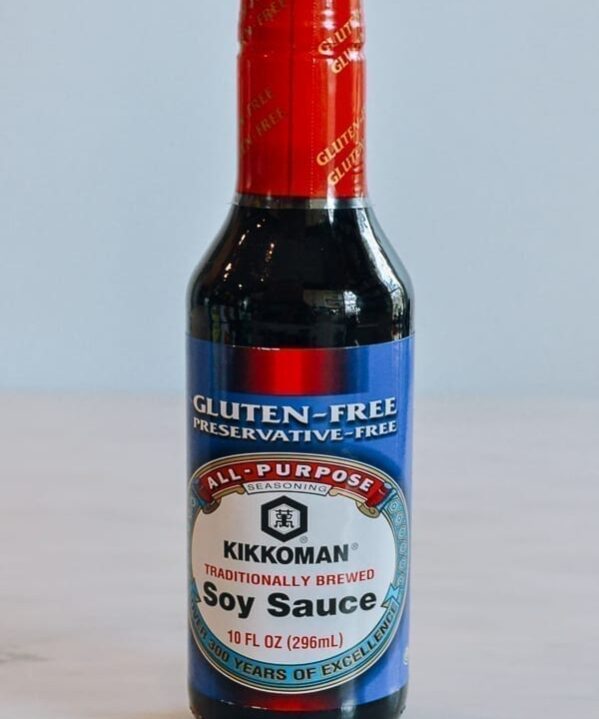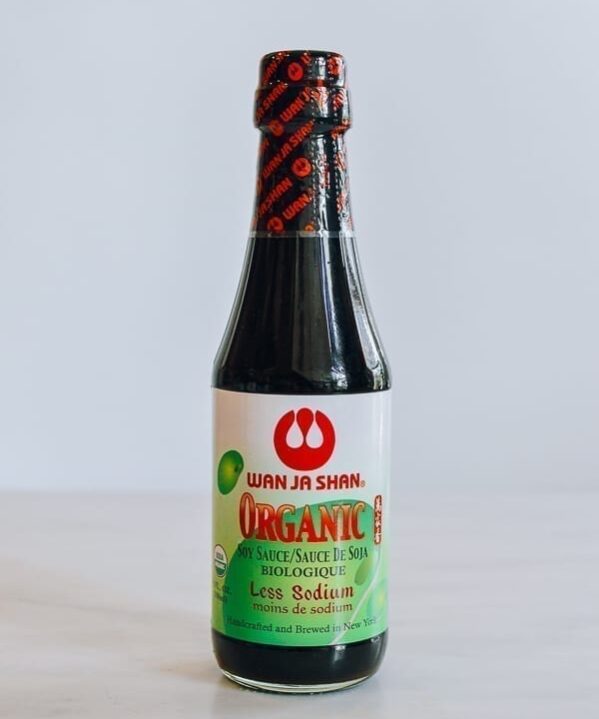Kikkoman, a Japanese food manufacturer well known for its soy sauces, is probably the most recognizable and easy-to-find brand of soy sauce in the United States.
But can you use Kikkoman in Chinese recipes? What’s the difference between Japanese soy sauce and Chinese soy sauce anyway? We’ll cover that and more in this quick article.
Japanese Soy Sauce vs. Chinese Soy Sauce
Soy sauce was developed in China over 2000 years ago, and later introduced to Japan. Since then, Japanese and Chinese styles of making soy sauce have diverged a bit.
While Japanese soy sauce is made with toasted wheat, Chinese soy sauce is usually made with wheat flour. Japanese versions are also a little bit less salty than Chinese varieties (generally a difference of 100-150 mg of sodium per tablespoon).
In both China and Japan, there is a distinction between dark and light soy sauce.
In China, light soy sauce is a thin condiment used most often for cooking. Chinese dark soy sauce, on the other hand, is a more viscous, sweeter sauce used to add color to dishes.
What is Kikkoman Soy Sauce?
Japanese soy sauce, or shoyu, also comes in both dark and light varieties, but Japanese dark soy sauce is actually more similar to Chinese light soy sauce in that it’s more often used in cooking. Kikkoman’s Naturally Brewed Soy Sauce is considered a dark soy sauce in Japan.
How Is It Used?
We use Kikkoman Naturally Brewed Soy Sauce when making dipping sauces or cooking Japanese dishes like Gyudon or Yakisoba. In general, for Chinese dishes, we prefer to use a Chinese light soy sauce.
That said, if Kikkoman soy sauce is all you can find at your local grocery store, you can certainly use it in place of Chinese light soy sauce in recipes.
Buying & Storing
Kikkoman is probably the best-known soy sauce among American consumers and will be available at your supermarket 9 times out of 10. If not, you can find it online.
Store in a cool, dry place like the pantry. No need to refrigerate.
Our Favorite Recipes That Use This Ingredient
- Gyudon (Japanese Beef & Rice Bowls)
- Sukiyaki (Japanese Beef Hot Pot)
- Oyakodon (Chicken & Egg Over Rice)
- Gyoza (Japanese Potstickers)
- Katsudon (Fried Pork Cutlets with Egg Over Rice)
- Chicken Yakisoba (Stir-Fried Noodles)
- Udon Noodle Soup with Chicken & Mushrooms
If you have further questions about the differences between Japanese soy sauce and Chinese soy sauce, let us know in the comments––we try to answer every single one.
